With the latest buzz word in optometry being myopia management, let’s not forget our presbyopes. In 2019 it was estimated there are over 17 million people aged between 45 and 65 in the UK alone.1 Having a range of contact lenses that is not only CE marked for myopia management but also presbyopia can be an invaluable asset to your practice, from both a business and a patient loyalty perspective.
The latest set of pandemic rules has brought in a number of presbyopes complaining of steaming up in masks, unable to function at work and stressed when shopping. As eye care professionals, it is our duty to help improve the lives of our patients. With presbyopic symptoms first being reported between 42 and 44 years of age, and complete loss of accommodation by 50 to 55 years,2 it is some surprise that only between 1 and 6% wear multifocal contact lenses.3
Until the last few years, the main way of correcting our presbyopic patients with contact lenses has been by prescribing either monovision or simultaneous vision lenses as centre distance and centre near designs. Though these contact lenses can offer good vision to some patients, dropout rate remains at its highest in 45 to 55 year olds, suggesting that presbyopia is a significant factor to contact lens drop out.4,5
Basic Science Revision
Single vision contact lenses have one focal point (figure 1). Traditional zonal centre distance and centre near multifocals have two focal points (figure 2). This means the wearer can see both near and distance images at the same time, with the brain left to unjumble the images. Over the years, such designs have become increasingly successful. However, some patients suffer ghosting, especially those with higher adds, resulting in ‘yo-yo’ patients, constantly running back and forth to their clinician in a chase for better vision.
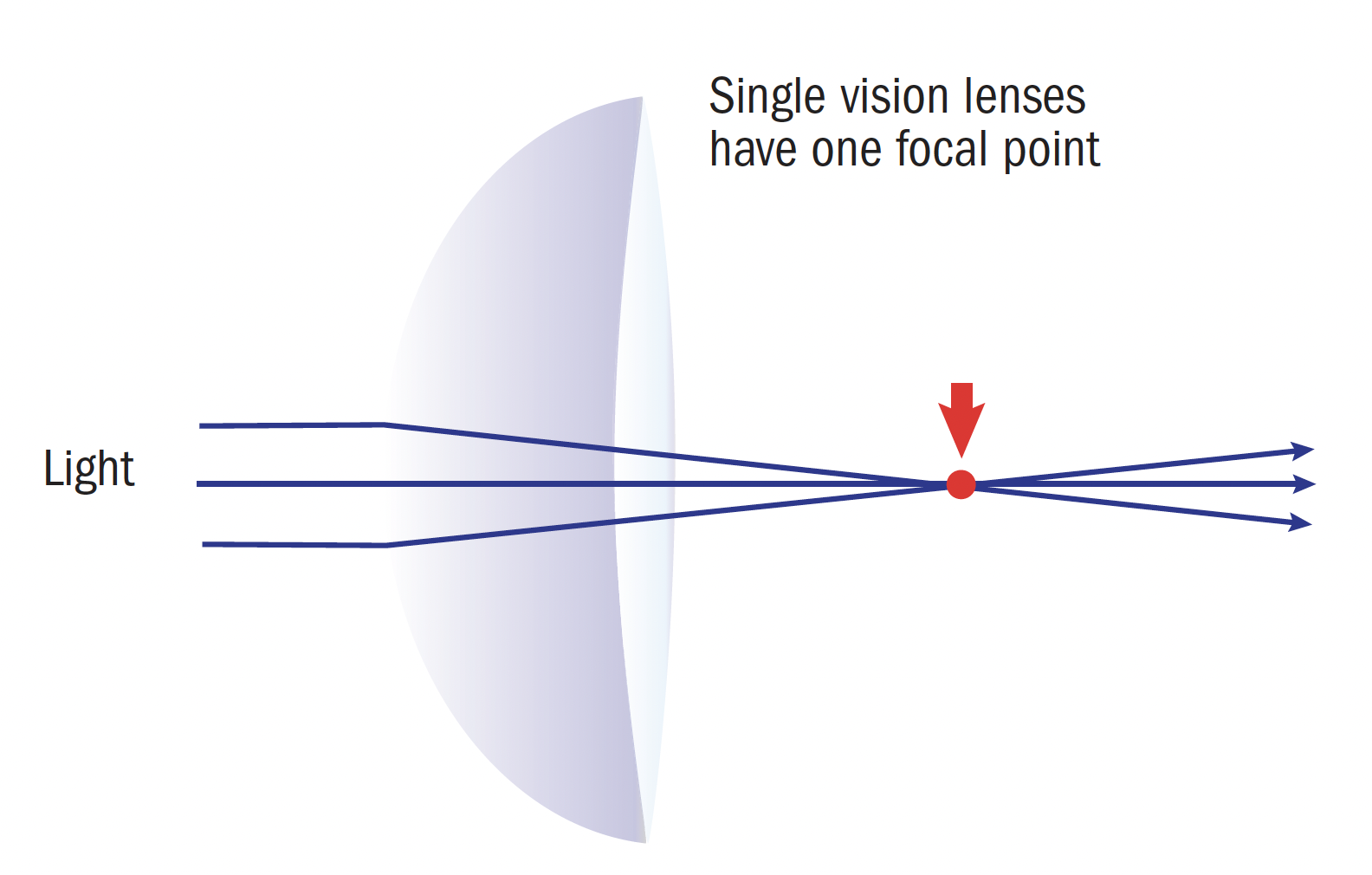 Figure 1: Single vision contact lenses have one focal point
Figure 1: Single vision contact lenses have one focal point
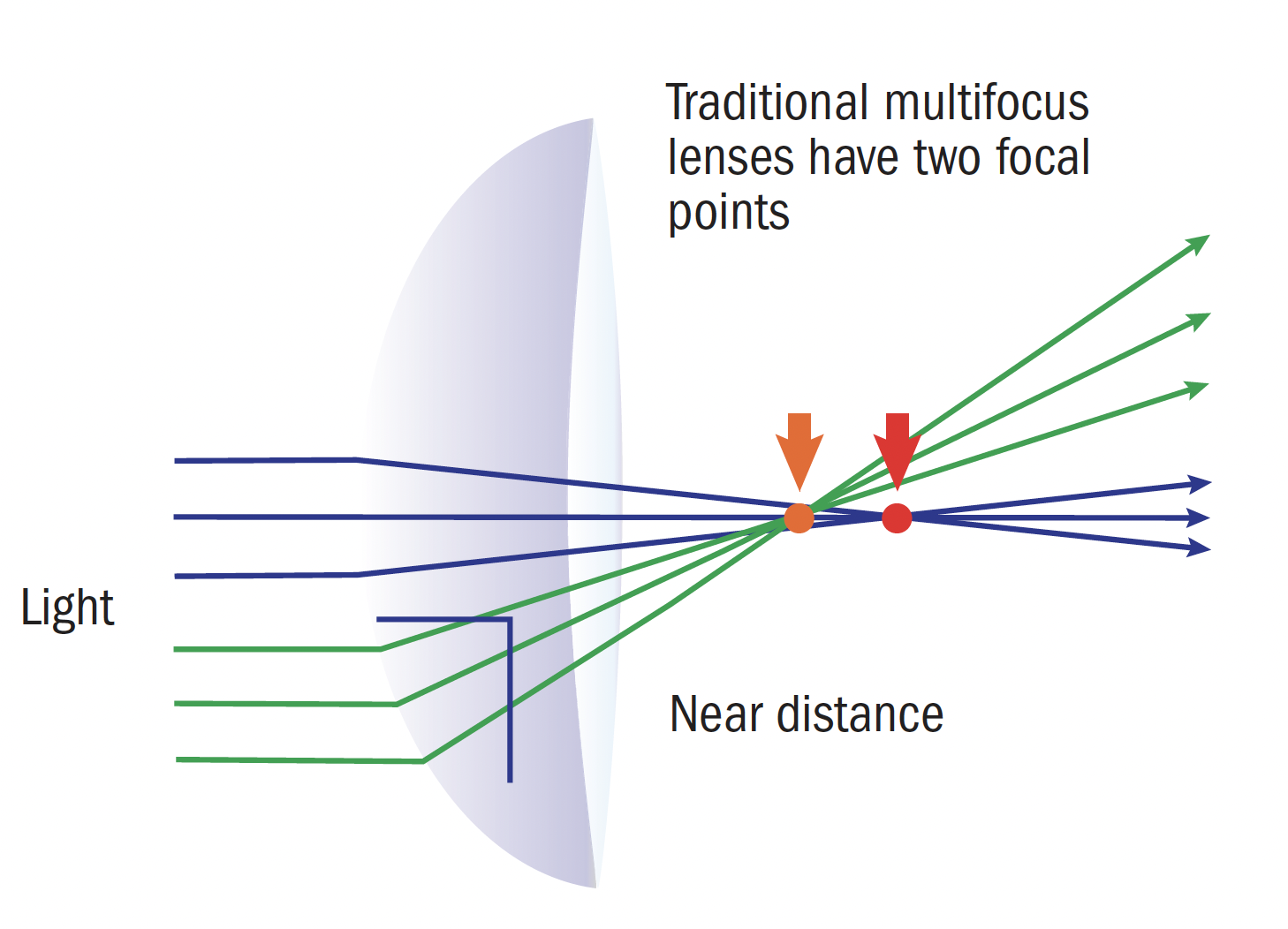 Figure 2: Traditional zonal centre distance and centre near multifocals have two focal points
Figure 2: Traditional zonal centre distance and centre near multifocals have two focal points
What is Extended Depth of Focus?
Simply put, depth of focus is the range of clear vision along the visual axis over which an image may be focused and perceived as clear. Extended depth of focus (EDOF) provides a wider range of clear vision along the optical axis (figure 3).4
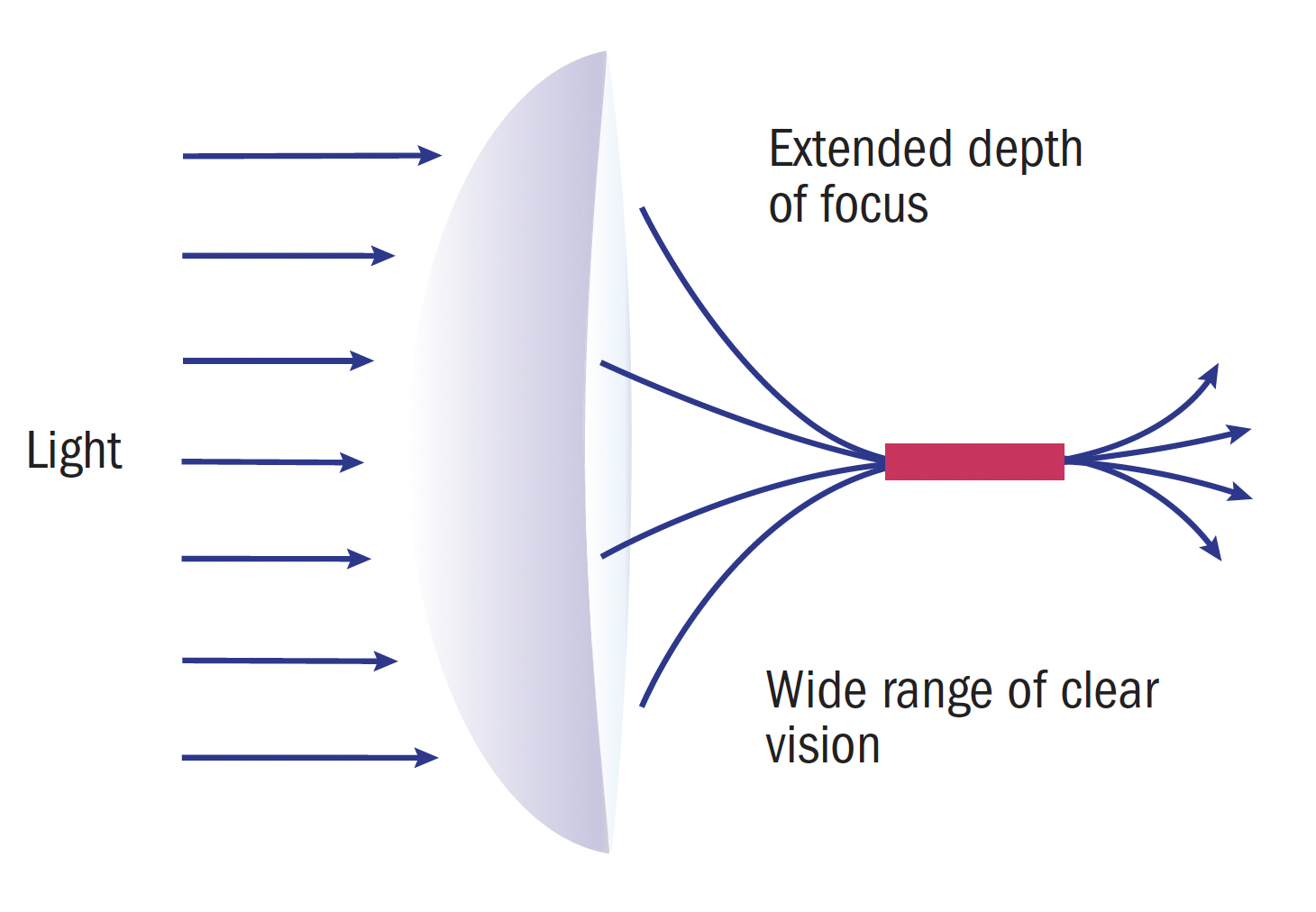 Figure 3: Extended depth of focus (EDOF) provides a wider range of clear vision along the optical axis
Figure 3: Extended depth of focus (EDOF) provides a wider range of clear vision along the optical axis
It’s all about aperture size. For those photographers among us, think about how we take a portrait photo. If we want the subject to stand out, we open the aperture to give a shallow depth of focus, blurring the background and making the subject clearly defined. To make the background and the foreground equally clear, we close the aperture to create an extended depth of focus (figure 4). There have been intraocular lenses using this EDOF principle for some time.
 Figure 4: Closing the aperture extends the depth of focus
Figure 4: Closing the aperture extends the depth of focus
There are now 2 patents available in EDOF contact lens design which have been used in the manufacture of a range of different contact lenses. These two designs are:
- NaturalVue One Day Multifocal
- Brien Holden Vision Institute (BHVI) EDOF
Figure 5 shows their properties alongside the two main designs of simultaneous vision multifocal lenses. We will now consider each of these designs in turn.
 Figure 5: Comparison of simultaneous and EDOF lens designs
Figure 5: Comparison of simultaneous and EDOF lens designs
NaturalVue One Day Multifocal
This lens is aspheric from the centre to the periphery, with no spherical zone, and carefully controls aberrations to achieve excellent visual acuity at all distances (figure 6).
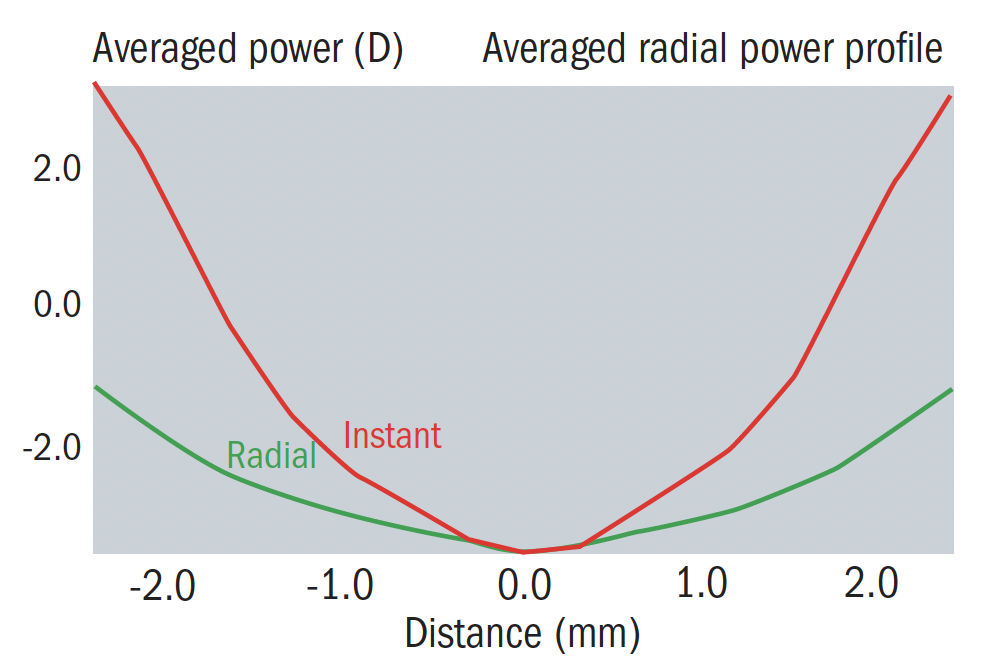 Figure 6: Power profile of the NaturalVue one day multifocal contact lens. The blue line in the plot below shows the radial/sagittal/axial (radial) power profile and the red line shows the instantaneous/tangential (instant) power profile.
Figure 6: Power profile of the NaturalVue one day multifocal contact lens. The blue line in the plot below shows the radial/sagittal/axial (radial) power profile and the red line shows the instantaneous/tangential (instant) power profile.
Invented by NASA aerospace engineer Dr Richard Griffin, the NaturalVue is completely independent of pupil size. The lens has a centre distance zone and, from around 5 microns from the centre (the precise distance varies with prescription) there is a rapid, continuous uninterrupted progression in relative plus power. The peripheral retina is unable to register this plus power, leading to peripheral suppression and a virtual pinhole effect.6
Early studies showed how this design can achieve an average visual acuity within 2 letters of best corrected spectacle vision.7 Without near additions, a patient may maintain good distance and near vision over many years. Indeed, a child, parent and grandparent could all be wearing the same prescription.
The smooth, gradual, continuous nature of the relative plus power increase creates an extended depth of focus and has been shown to provide visual acuity and stereo-acuity similar to vision with best-corrected spectacle refraction.8
The NaturalVue is made using the etafilcon material, originally used by Johnson & Johnson in their Acuvue range, and is the only daily disposable contact lens CE marked for both presbyopia and myopia management.
The Brien Holden Vision Institute EDOF Design
This EDOF design was developed by the Brien Holden Vision Institute and is licensed to different manufacturers for different lens types and modalities. It can be prescribed for presbyopia correction as well as for myopia management, though it has yet to be CE marked for the latter. The lenses provide a ‘non-monotonic power profile across the optic zone’ which manipulates higher order aberrations to create an extended depth of focus effect. The lenses are available with three different EDOFs; low, med and high. Figure 7 shows the power profile of the lens.
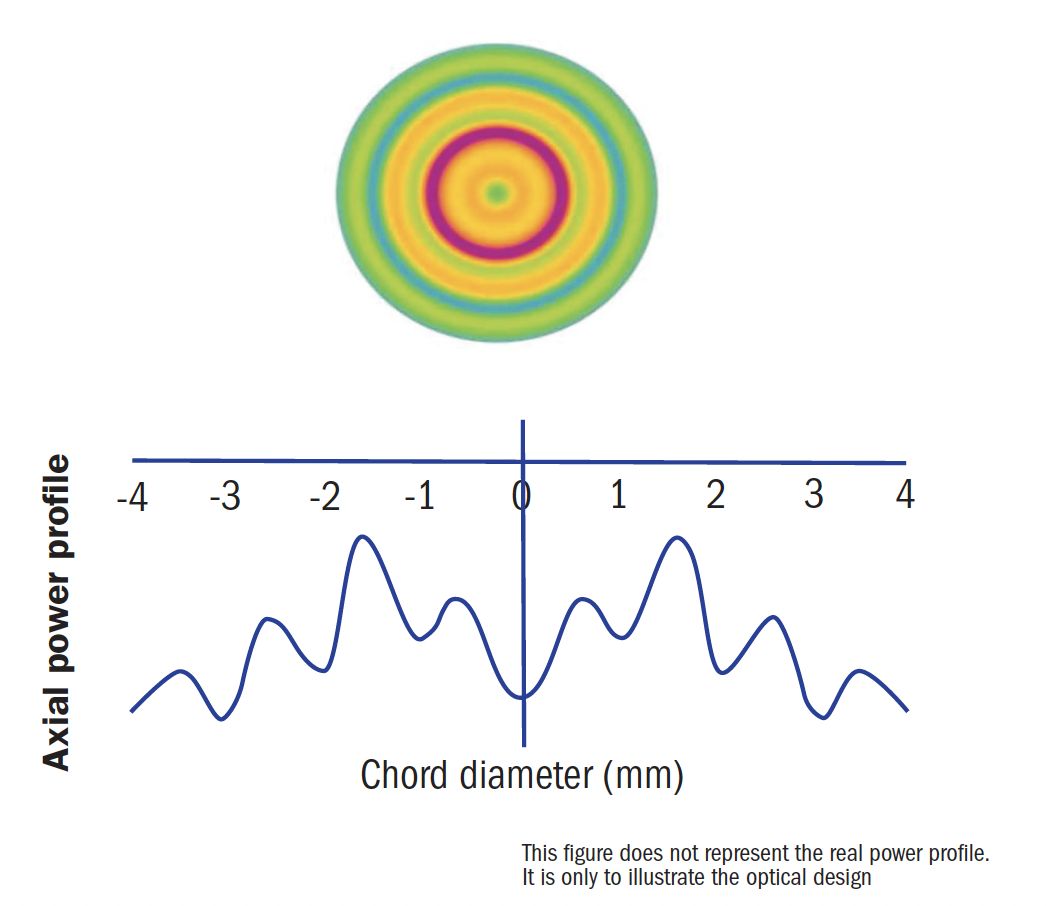 Figure 7: Power profile of the BHVI EDOF multifocal contact lens (from mark’ennovy)
Figure 7: Power profile of the BHVI EDOF multifocal contact lens (from mark’ennovy)
Contact lenses using this design include;
UltraVision Seed EDOF
SEED 1day Pure EDOF lenses are available through it’s UK subsidiary (UltraVision) and are currently CE marked for presbyopia, although in theory could be used for myopia management ‘off label’.
The SEED 1day Pure EDOF lenses are made from a material described as Seed Ionic Bond (SIB) which is claimed to be biocompatible with the ocular surface. To enable this, Seed state that the lenses contain a balance of both positive and negative ions resulting in electrical stability. This stability keeps out dust and impurities, resulting in better comfort. In addition, the packaging solution contains alginic acid, a natural moisturising agent extracted from seaweeds, such as kelp and wakame, a brown seaweed, Undaria pinnatifida, found around coastal Japan and Korea.
mark’ennovy Tailor Made Silicone Hydrogel EDOF & MyLo
Using the same BHVI design, mark’ennovy have launched their lens under 2 different banners. The MyLo is the only CE marked lens for myopia management made from silicone hydrogel material and includes a +1.50DS add.
The power range is extensive, so especially helpful for high plus powers which are not available in other similar design lenses. Its tailor-made options are also useful for particularly flat or steep corneas, such as post-Lasik treated corneas.
SynergEye iD (coming September 2021)
This lens is a further development of the Duette and Duette Progressive hybrid lenses with design features aimed at optimising the fit. The SynergEyes iD will be available both as a single vision lens and in the BHVI EDOF lens design already discussed. Both lenses have a larger 8.5mm optic zone, with BOZRs available in 0.01mm steps (hence iD which stands for ‘individual design’), along with a new linear skirt which will come in twelve different fittings.
These hybrid contact lenses are a combination of a 130 Dk rigid gas permeable with a surrounding 84 Dk silicone hydrogel skirt, bonded using a patented Hyperbond Junction technology ‘guaranteed not to come apart.’
These lenses will be the only EDOF contact lenses to correct over 1 dioptre of corneal astigmatism. In fact, the combination of soft and RGP materials offers the opportunity to correct corneal astigmatism of up to 6.00DC without the need for a toric lens and the associated rotational issues and with the immediate comfort of a soft lens.
Current multifocal RGP contact lenses can seem daunting to fit due to the nature of increased movement. However, the soft skirt of SynergEyes iD centres the lenses easily while correcting corneal astigmatism at the same time.
These lenses will be ordered empirically using the patients K readings, an accurate HVID and spectacle Rx. With this information, the UK distributor of SynergEyes iD (Positive Impact) can supply the required lenses. They will also offer full training and patient support if required. These contact lenses are CE marked for presbyopia but not myopia management, although in theory they could be a useful option for young astigmatic myopes but would be ‘off label.’
Key properties of the different lenses mentioned are summarised in table 1.
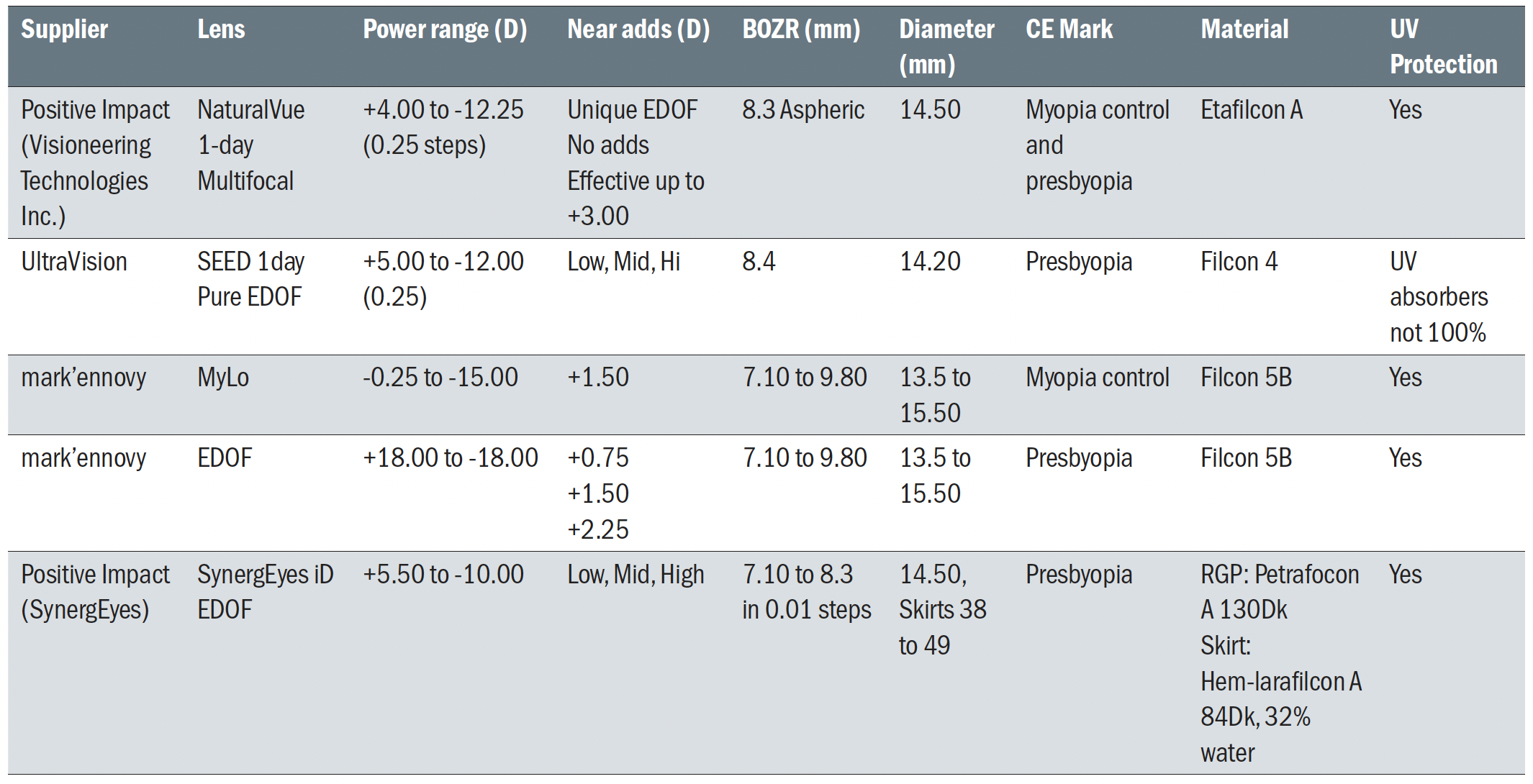 Table 1: Summary of currently available EDOF lenses in the UK
Table 1: Summary of currently available EDOF lenses in the UK
Fitting EDOF Contact Lenses
Eye Dominance
As with all multifocal contact lenses, it is useful to check eye dominance before proceeding with the fit. The authors suggest using the sensory method of blurring one eye with a +1.00DS lens while the patient keeps both eyes open. Asking the patient to score vision out of 10, while each eye is blurred in turn, can be useful to determine how much a patient will tolerate blur in one eye. The ‘motor test’ of using hands as optical tools or looking through a cardboard hole tends not to be accurate in this case.
Always Follow the Fitting Guide
The essential rule for fitting all forms of presbyopia correcting contact lens is to follow the fitting guide. You will need to complete accreditation training available from distributors Positive Impact to get access to the NaturalVue and Synergeyes. UltraVision and mark’ennovy may be contacted directly for for information about their products.
EDOF lenses cannot be ordered from the current multifocal contact lens or as current multifocal prescription or spectacle prescription. This is due to the unique nature of EDOF designs. Both EDOF designs can be very sensitive to 0.25DS steps and this can be the difference between success and failure.
How To Fit NaturalVue
This is a three step process:
- Step One; start with the full prescription in the trial frame, including the full sphere and cylinder. No best spheres here. Using the duochrome, push one step into the green. This is to ensure the patient is not over plussed.
- Step Two; put the full green result into the NaturalVue calculator (available on desktop, android and apple devices). This will provide the starting power.
- Step Three; wait at least 10 minutes for the neuroadaptation to begin. Evaluate the distance vision first and adjust if necessary. Adjusting the power will move the focal point forward and backwards. The aim is to land the virtual pinhole on the fovea.
The process is easy; remember, no adds and the lens fits like a single vision lens. Simple enhancements to distance can be made by adding -0.25DS to the dominant eye. Near enhancements are rarely needed but can be made by adding +0.25DS to the non-dominant eye. Do not over-refract as each lens is unique. The lens must be changed on eye to gain the best vision.
How to Fit SEED 1day Pure EDOF
The key steps are as follows;
- Take the spherical average of the spectacle correction and correct for back vertex distance
- Determine the EDOF type (Hi, Med, Lo) by comparing the spectacle refraction add to the chart
- Apply lenses and allow to settle for at least 15 minutes, preferably in waiting area to allow patient to experience natural vision
- Over-refraction; check powers using ‘flippers’ or trial lenses over lenses in as close to the natural environment of the wearer as possible
- Do NOT use a phoropter head.
If the distance vision is not comfortable with small over refractions, try moving down to a lower add type for the dominant eye. Table 2 shows the most useful adds for a range of eye dominance and spectacles adds. Note the higher add is preferable in the dominant eye which is different to traditional multifocal contact lenses.
 Table 2: Recommended EDOF range for different spectacles adds and ocular dominance when fitting the SEED 1day Pure EDOF lens
Table 2: Recommended EDOF range for different spectacles adds and ocular dominance when fitting the SEED 1day Pure EDOF lens
How to fit the mark’ennovy EDOF and MyLo
- To calculate the lens diameter measure the HVID and add +3mm
- Use the online calculator to calculate the BOZR (http://markennovy.com/fitting-calculator/) or contact customer services for guidance.
- Calculate the power from the spectacle prescription taking into account the back vertex distance (table 3)
- Evaluate the lenses after 20 minutes settle time.
- Evaluate the physical fitting: check if diameter, centration and movement are correct.
- Check the monocular and binocular VA for both distance and near: ideally there will not be more than one line difference between the eyes.
- With both eyes opened, perform over-refraction only for the distance which needs to be improved and changing as little as possible the prescription to achieve satisfactory results (see table 4).
 Table 3: Calculating the EDOF power for the mark’ennovy EDOF and MyLo contact lenses
Table 3: Calculating the EDOF power for the mark’ennovy EDOF and MyLo contact lenses
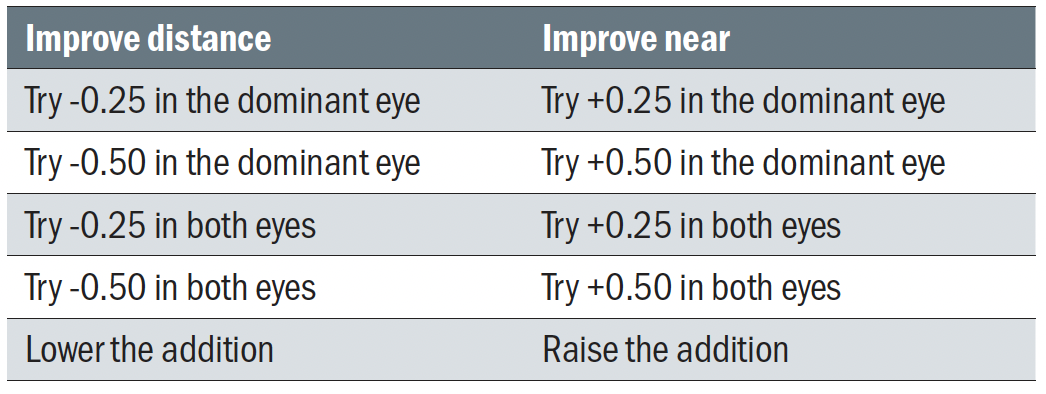
Table 4: Adjusting the sphere power (in DS) to optimise acuity with the mark’ennovy EDOF and MyLo
Case Studies
Case One
Patient Y came to the practice during lockdown, she was working at a fire station as an administrator. Patient Y had worn contact lenses for many years but had lapsed due to presbyopia. Spectacles were now inconvenient due to needing to wear a mask at work.
Refraction;
- R; -3.00/-0.75 x170 (6/6)
- L; -2.75 (6/6)
- Add; +2.00 (N5/N5)
NaturalVue Prescription;
- •R; -3.75
- •L; -2.75
- •Bin; 6/6 N5
Case Two
On attending practice, patient Z was currently wearing a centre-near design multifocal contact lens correction but was finding close work unclear and a strain. The prescription had already been adapted in one eye to offer a modified monovision. However, near vision was still unsatisfactory.
Refraction;
- R; -1.75/-0.50 x 65 (6/7.5)
- L; -2.50/-0.50 x 105 (6/7.5)
- Add; +2.50 (N6/N6)
Total One Multifocal
- R; -1.25 hi
- L; -2.50 hi
- Bin; 6/9/ N14
SEED 1day Pure EDOF
- R; -2.00 hi
- L; -2.50 Hi
- Bin; 6/7.5/ N8
Although Patient Z still needs to wear over specs for near detail, the vision was significantly better than the simultaneous design. She was also very happy with the comfort of Seed.
Case 3
Patient M presented and was very stressed about her eyesight. She was self- prescribing monthly monovision contact lenses off the internet but having problems with her vision. This was highlighting when working in her role as an occupational therapist. During Covid lockdown, Patient M was conducting home visits in full PPE (including mask and face shield). She was no longer able to top up her vision with overspecs due to the face shield. Patient M’s work as a health key worker was essential but she was struggling to do her job. She had a history of occlusion therapy as a child and has residual left strabismic amblyopia.
Refraction;
- R; +6.50/-0.50x12 (6/5)
- L; +6.75/-0.50x150 (6/6)
- Add; +2.25 (N5/N5)
Internet Prescription;
Biofinity Monthly
- R; +7.50
- L; +8.50
- Bin; 6/9 N8
mark’ennovy EDOF;
- R; 8.30/14.00, +6.75, Add +2.25
- L; 8.30/14.00, +7.50, Add +2.25
- Bin; 6/6-4/N6
Patient M has been very pleased with her correction though price was a challenge at first.
Conclusion
As eye care practitioners, it is our duty to stay up to date with the latest developments. There are now more choices than ever, not only for our young myopes, but our presbyopes too. The internet has made it possible for our patients to research new products and there is nothing more embarrassing than our patients knowing more than we do. With many turning to the internet to purchase their contact lenses online, it is important for eye care professionals to show our expertise in understanding the different options available to all creating trust and loyalty.
The EDOF represents an important development in the way presbyopia may be managed, and offers a further option to ensure more of our patients are corrected as well as possible.
Phil Thompson FBDO CL MBCLA is Professional Services Lead For Positive Impact incorporating SynergEyes UK, NaturalVue and Beth Ralph FBDO CL MBCLA is a Professional Services Consultant for Positive Impact.
References
- UK: population, by age 2019 Statista
- https://eyewiki.aao.org/Presbyopia Accessed 3 March 2020
- Morgan PB, Efron N, Woods CA, International Contact Lens Prescribing Survey Consortium. An international survey of contact lens prescribing for presbyopia. Clin Exp Optom. 2011 Jan;94:87-92.
- Understanding the needs of pre-presbyopes and emerging presbyopes. (05/2014) Points de Vue. International Review of Ophthalmic Optics.
- Vision Needs Monitor (2013).
- VTI NaturalVue Multifocal Contact Lenses - Neurofocus Optics (vtivision.com)
- VTI Date on file 2015 n=59, Data assessed after 1 week of wear, No statisticially significant differences were obtained between BCSV and NaturalVue one day multifocal contact lenses.
- “Case Series Analysis of Myopic Progression Control with Unique Extended Depth of Focus Multifocal Contact Lens”. J Cooper M.S.O.D., Brett O’Connor O.D., Ronald Watanabe O.D., Randall Fuerst O.D., Sharon Berger O.D., C.O.V.D., Nadine Eisenberg O.D., Sally Dillehay ED.D
- Commercial Achievements | BHVI
- Products - One Day Pure EDOF | SEED (seed-uk.com)
- Mylo - mark’ennovy (markennovy.com)
- Edof - mark’ennovy (markennovy.com)
